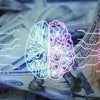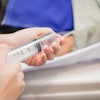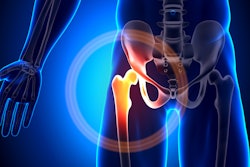A team of University of California, Berkeley researchers has developed a "virtual stress test" for CT-based assessment of bone mineral density (BMD) in an evaluation for osteoporosis.
 Tony Keaveny, PhD, of the University of California, Berkeley.
Tony Keaveny, PhD, of the University of California, Berkeley.
The technology's development is timely, as the U.S. Preventive Services Task Force (USPSTF) is currently reviewing its 2018 guidance for osteoporosis screening, lead researcher Tony Keaveny, PhD, of Berkeley BioMechanics Laboratory, told AuntMinnie.com. Currently, the task force doesn't recommend osteoporosis screening for men, even though men sustain one-third of all hip fractures and that drug treatment for the condition in men is as effective as it is in women.
Keaveny discusses the benefits of BCT, especially for men, who are often underassessed for osteoporosis."Hip fractures are traumatic events -- in fact, the mortality rate for men after a hip fracture is as high as 20%," he said.
Keaveny's team began to develop the technology, described as biomechanical CT (BCT) called VirtuOst, in the early 2000s under the auspices of a startup firm, O.N. Diagnostics. In 2018 O.N. Diagnostics secured a Current Procedural Terminology (CPT) code for the test, which allows it to be covered by Medicare, Keaveny said.
VirtuOst's technology is a collaboration between engineering and medicine: it uses engineering principles to measure bone strength from CT exams of the hip or spine originally taken for another indication. It produces bone strength measurements, a dual-energy x-ray absorptiometry (DEXA)-equivalent BMD T-score at the hip, and a volumetric BMD assessment of trabecular bone at the spine; based on the results, a patient's physician can identify osteoporosis and assess fracture risk without the need for a DEXA exam or further CT imaging.
Keaveny explains how BCT technology works."BCT is particularly well-suited to opportunistic use for the patient without a recent DEXA who is undergoing or has previously undergone CT testing (including hip or spine regions) for an unrelated medical condition," Keaveny's group noted.
 Image courtesy of Tony Keaveny, PhD.
Image courtesy of Tony Keaveny, PhD.
A key benefit to the technology is that it does not impart further radiation, according to Keaveny. Physicians send O.N. Diagnostics readers -- who are mostly engineers -- the CT findings and are billed quarterly for the reports.
Keaveny describes how BCT tests are read."VirtuOst is physics-based analysis of CT data, and the results are definitive," Keaveny told AuntMinnie.com.
O.N. Diagnostics plans to submit further clearance documents to the U.S. Food and Drug Administration (FDA) this year to expand the technology to include muscle and soft tissue appraisal.
"Our new version has even more potential beyond bone mineral density evaluation," Keaveny said. "It includes muscle and soft tissue assessment and has even higher sensitivity and specificity."
Keaveny's team's 2020 report on VirtuOst can be found here.




















